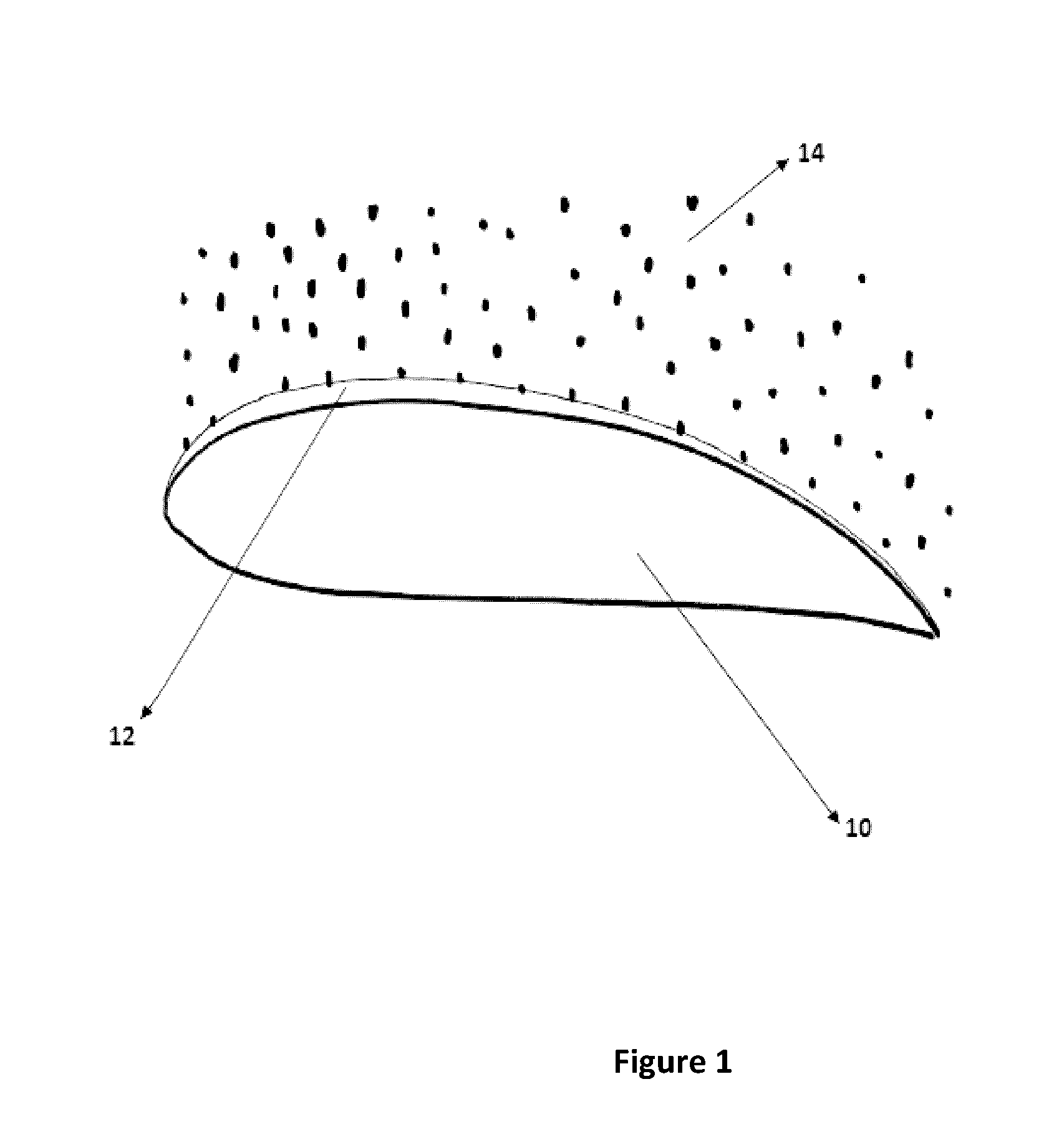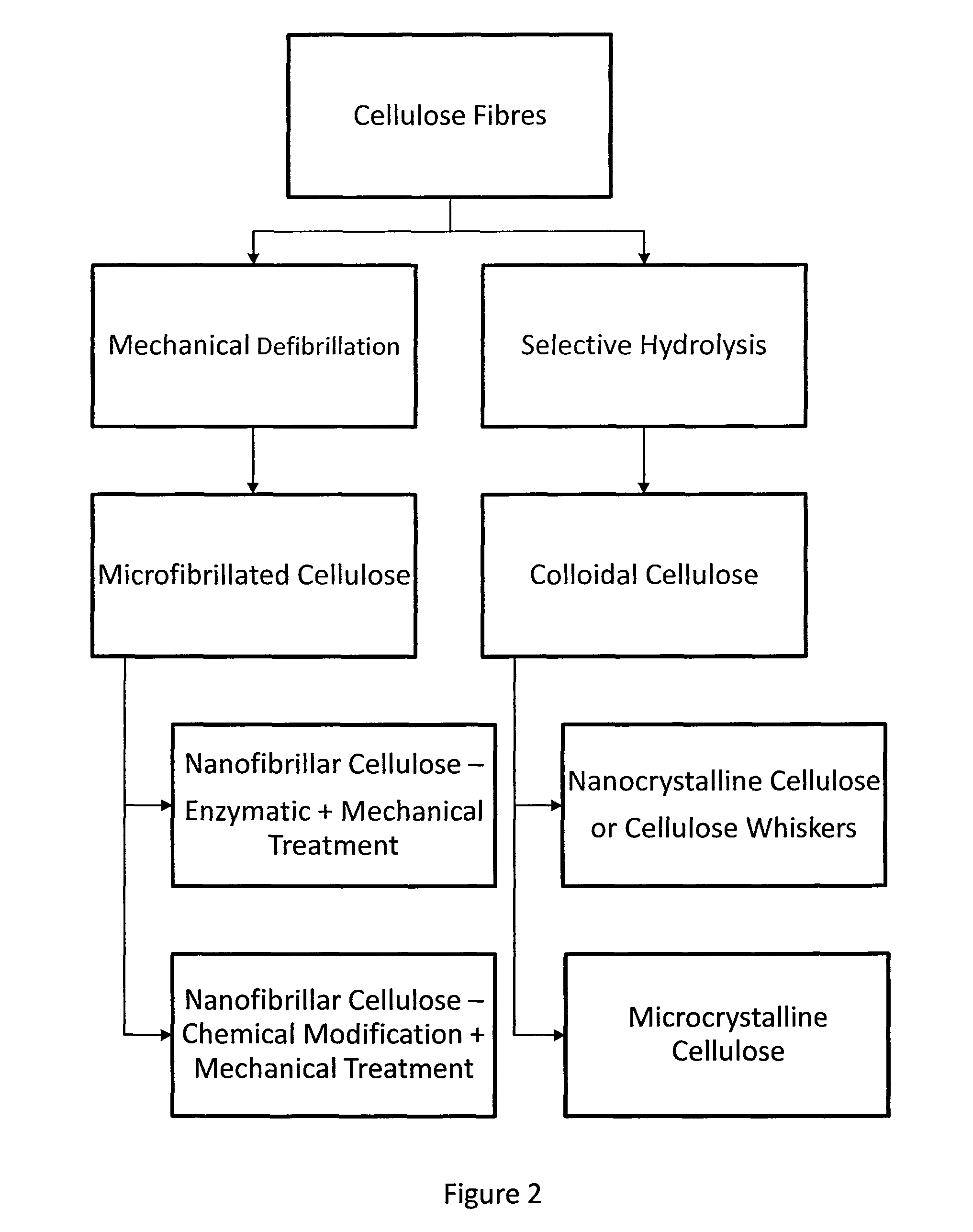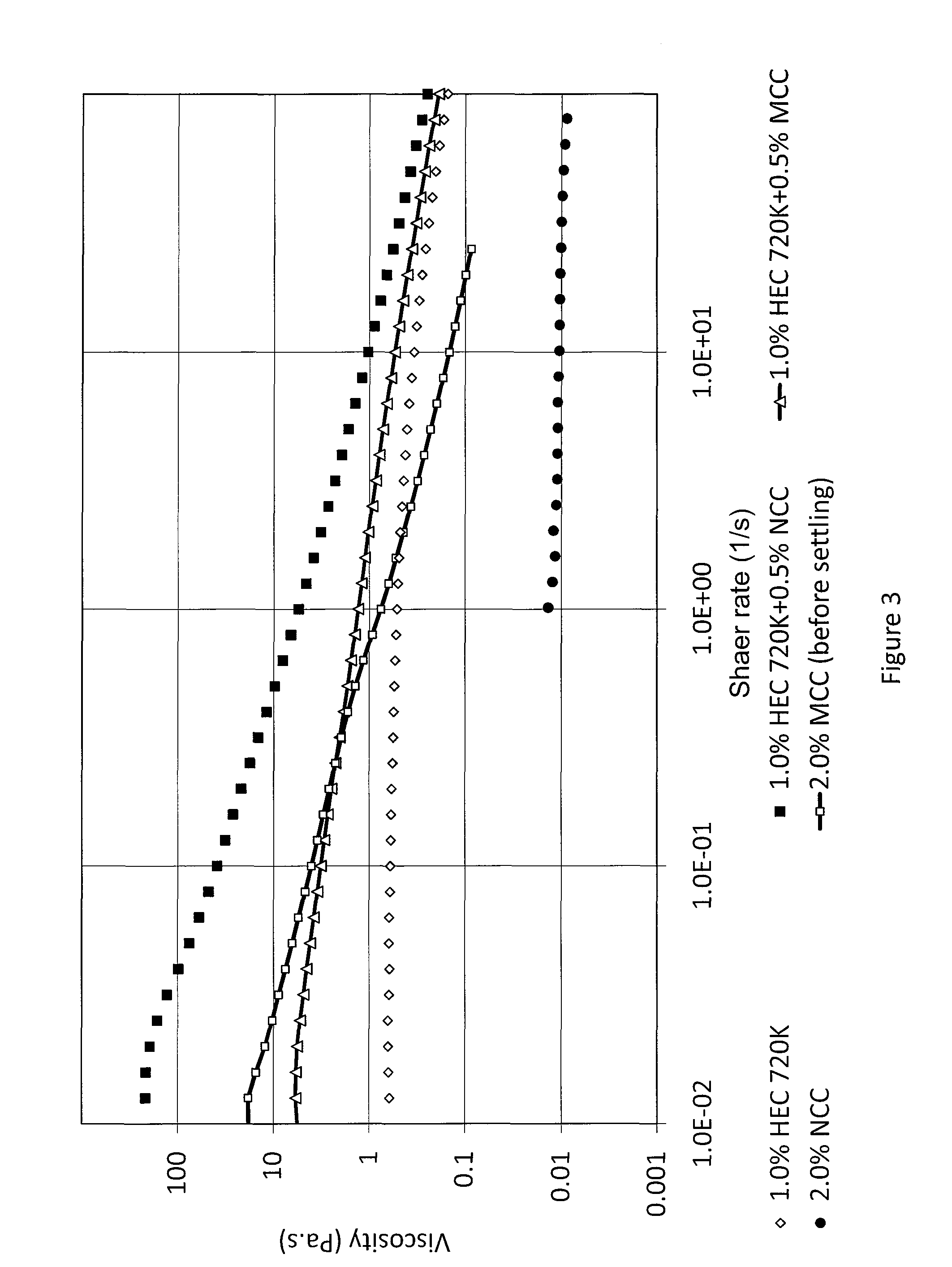Aircraft anti-icing fluids formulated with nanocrystalline cellulose
a technology of nanocrystalline cellulose and anti-icing fluid, which is applied in the direction of transportation and packaging, other chemical processes, adhesive types, etc., can solve the problems of frozen precipitate beginning to accumulate, less effective, and thinner anti-icing fluid layer
- Summary
- Abstract
- Description
- Claims
- Application Information
AI Technical Summary
Benefits of technology
Problems solved by technology
Method used
Image
Examples
example 1
Thickeners with Hydroxyethyl Cellulose and Nanocrystalline Cellulose
[0046]The performance of hydroxyethyl cellulose (HEC) as an anti-icing thickener with and without nanocrystalline cellulose (NCC) was tested to see how the addition of nanocrystalline cellulose affected thickening properties at low shear rates (before takeoff) and high shear rates (during takeoff). Three different molecular weights of HEC were tested. The results are shown in Tables 1, 2 and 3 below:
[0047]
TABLE 1Performance of HEC (MW = 250,000) with and without NCCViscosity (Pa · s) at lowTemperatureand high shear ratesThickener(° C.)at γ = 0.13 s−1at γ = 20 s−10.2% HEC200.010.0100.040.03−100.070.05−180.110.090.2% HEC +200.140.040.5% NCC00.450.09−100.830.14−181.480.19
[0048]
TABLE 2Performance of HEC (MW = 750,000) with and without NCCViscosity (Pa · s) atTemperaturelow and high shear ratesThickener(° C.)at γ = 0.13 s−1at γ = 20 s−10.2% HEC200.020.0200.040.04−10N / AN / A−180.110.090.2% HEC +204.170.090.5% NCC05.190.15−1...
example 2
Thickeners with Hydrophobically Modified Hydroxyethyl Cellulose & Nanocrystalline Cellulose
[0051]As test similar to Example 1 was carried out, using hydrophobically modified hydroxyethyl cellulose (HMHEC) as the thickener, with and without adding nanocrystalline cellulose. The results of this test are given in Table 4 below.
[0052]
TABLE 4Performance of HMHEC (MW = 400,000) with and without NCCViscosity (Pa · s) atTemperaturelow and high shear ratesThickener(° C.)at γ = 0.13 s−1at γ = 20 s−10.2%200.060.03HMHEC00.230.10−100.400.14−180.910.190.2%202.620.10HMHEC +03.590.160.5% NCC−104.910.22−186.830.28
[0053]As with HEC, HMEC showed little change in viscosity from low shear to high shear conditions, acting more like a Newtonian fluid. By addition of nanocrystalline cellulose to the thickener, however, the low shear viscosity increased dramatically, providing a much better protection time. The high shear viscosity of the nanocrystalline cellulose-added thickener remained quite low, ensurin...
example 3
Thickeners with Carboxymethyl Cellulose and Nanocrystalline Cellulose
[0054]As similar test to Example 1 was carried out, using carboxymethyl cellulose (CMC) as the thickener, with and without the addition of nanocrystalline cellulose. The results are given in Table 5 below.
[0055]
TABLE 5Performance of CMC (MW = 250,000) with and without NCCViscosity (Pa · s) atTemperaturelow and high shear ratesThickener(° C.)at γ = 0.13 s−1at γ = 20 s−10.2.%200.010.02HMHEC00.050.06−100.100.09−180.160.140.2%205.250.14HMHEC +06.700.220.5% NCC−106.500.29−185.030.38
[0056]As with HEC and HMEC, CMC also showed little change in viscosity from low shear to high shear conditions when used on its own as a thickener. By addition of nanocrystalline cellulose to the thickener however, the low shear viscosity increased dramatically, while the high shear viscosity remained low.
[0057]Tables 6, 7 and 8 below show the high and low shear rate viscosities for varying HEC and NCC concentrations.
[0058]
TABLE 6Performance ...
PUM
| Property | Measurement | Unit |
|---|---|---|
| surface temperatures | aaaaa | aaaaa |
| air humidity | aaaaa | aaaaa |
| surface temperature | aaaaa | aaaaa |
Abstract
Description
Claims
Application Information
 Login to View More
Login to View More - R&D
- Intellectual Property
- Life Sciences
- Materials
- Tech Scout
- Unparalleled Data Quality
- Higher Quality Content
- 60% Fewer Hallucinations
Browse by: Latest US Patents, China's latest patents, Technical Efficacy Thesaurus, Application Domain, Technology Topic, Popular Technical Reports.
© 2025 PatSnap. All rights reserved.Legal|Privacy policy|Modern Slavery Act Transparency Statement|Sitemap|About US| Contact US: help@patsnap.com



